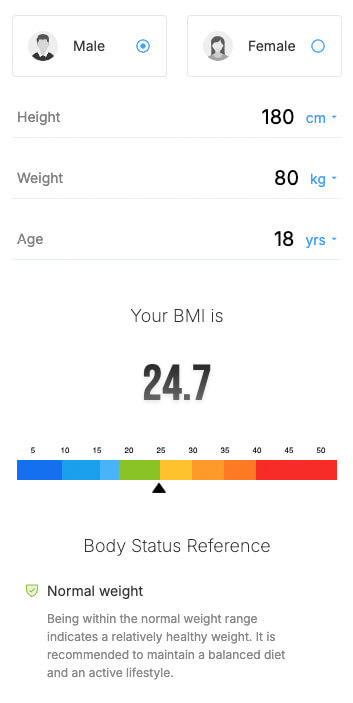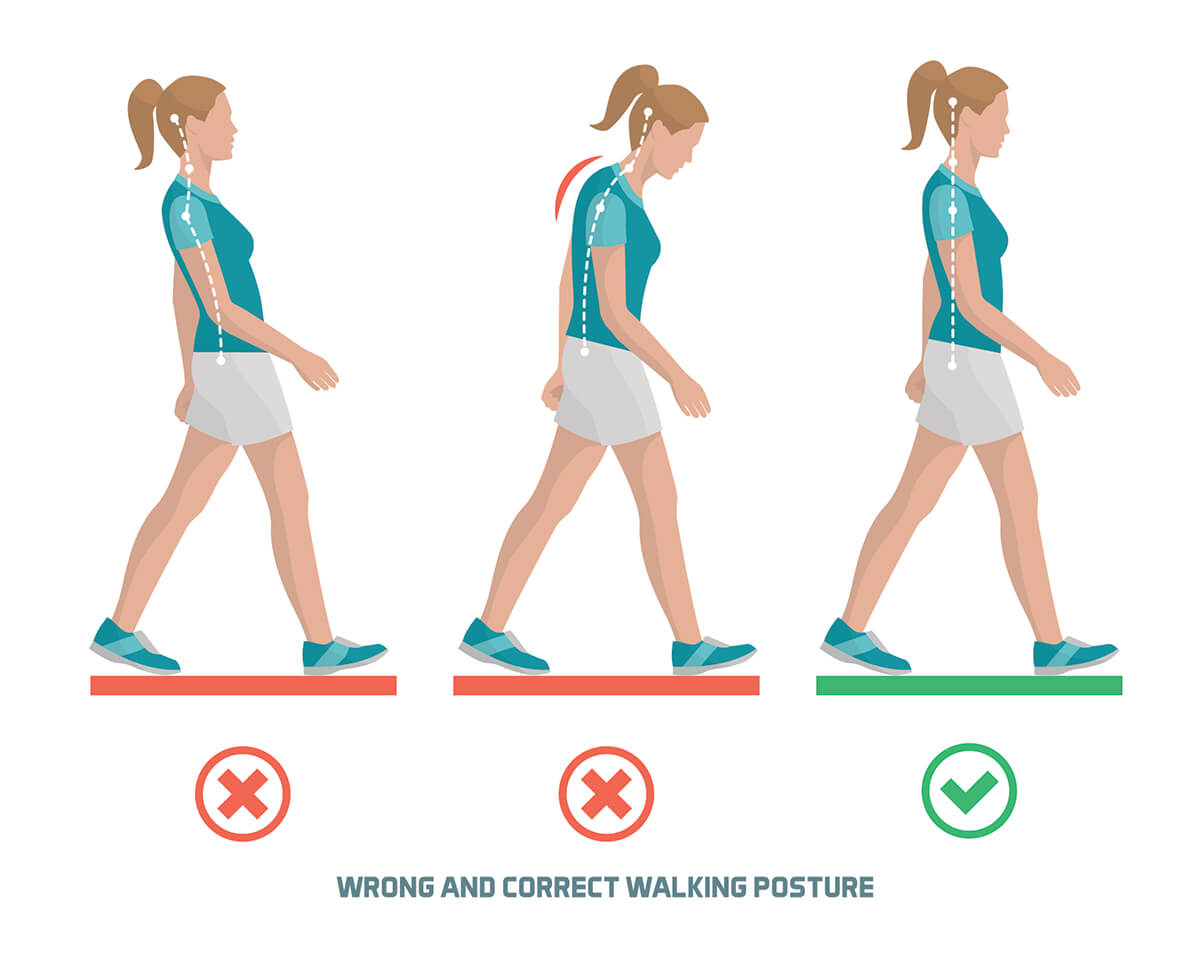Walking According to BMI: 5000 or 10000 Steps a Day?
Walking is a simple and effective form of exercise that many of us can easily incorporate into our daily lives. But how many steps should you aim for each day based on your Body Mass Index (BMI) to stay healthy? The answer varies for each individual. In this article, we will explore how to set suitable daily step goals according to your BMI, enabling you to achieve optimal health benefits. Whether you want to lose weight, maintain your health, or improve your fitness level, we’ll provide you with scientific advice and practical steps to help you walk your way to a healthier lifestyle.
The Relationship Between Walking and Health
Walking may be an everyday activity, but its benefits extend far beyond that. Whether it's to relieve stress or boost physical fitness, walking can bring positive changes to our lives. Research shows that consistently walking each day can help control weight and reduce the risk of various chronic diseases, such as heart disease, diabetes, and dementia.
Eye-Opening Data
Did you know? A study published in the Journal of Clinical Endocrinology and Metabolism found that individuals who walk 10,000 steps a day can cut their risk of developing type 2 diabetes by nearly half! Furthermore, for every additional 1,000 steps taken, the risk of death from cardiovascular disease decreases by 6%. When it comes to dementia, walking just 3,826 steps a day can lower the risk by 25%, and that number rises to 51% with 9,826 steps. These statistics prompt us to consider that walking is not just a daily activity; it's a wise investment in our health.
Comprehensive Benefits of Walking
In addition to helping control weight, walking greatly benefits our mental health. When we walk, our bodies release endorphins, known as "feel-good hormones," which can elevate our mood and reduce anxiety and stress. Imagine strolling along a park path, breathing in fresh air, and feeling uplifted—that's the intangible wealth walking can provide.
Research also indicates that those who walk briskly tend to have better cardiovascular health and may even live longer. A large-scale study suggested that faster walkers could gain an additional 15 to 20 years of life! Moreover, the relationship between walking speed and step count is not merely additive; the quality of the walk is equally important.
Is More Walking Always Better?
So, is more walking always better? Not necessarily. Each person’s physical condition, lifestyle, and health goals are different, which means ideal step counts will vary. Next, we’ll delve into how to choose the appropriate daily step count based on your BMI for the best health outcomes.
Choosing Your Daily Steps Based on BMI
Understanding BMI and Its Importance
BMI (Body Mass Index) is a simple yet effective tool to help us assess the relationship between weight and height, thereby understanding our overall health. With BMI, we can get an initial indication of whether a person falls within a healthy weight range. The calculation is straightforward: simply divide weight (in kilograms) by height (in meters) squared:
$$ \text{BMI} = \frac{\text{Weight (kg)}}{\text{Height (m)}^2} $$For example, if you weigh 70 kg and are 1.75 m tall, your BMI would be calculated as follows:
$$ \text{BMI} = \frac{70}{1.75^2} \approx 22.86 $$The significance of BMI lies in its ability to provide a clear reference for health. According to the World Health Organization (WHO), BMI is categorized as follows:
| BMI | Weight Status |
|---|---|
| BMI < 18.5 | Underweight |
| 18.5 ≤ BMI < 24.9 | Normal weight |
| 25 ≤ BMI < 29.9 | Overweight |
| BMI ≥ 30 | Obesity |
Knowing your BMI can help identify potential health risks. For instance, individuals who are overweight or obese have a significantly increased risk of chronic conditions such as heart disease and diabetes, while those who are underweight may suffer from malnutrition and reduced immunity.
To help you calculate your BMI, we’ve provided a BMI calculator. Simply enter your height and weight to quickly find out your BMI. Click here to use the BMI calculator and understand your health status!

Step Recommendations for Different BMI Ranges
Based on various BMI categories, we can formulate specific step recommendations to help manage weight and enhance health. Here are the suggested step counts for different BMI ranges:

1. BMI < 18.5 (Underweight)
For individuals who are underweight, increasing walking can help promote muscle gain and weight increase. Aim for at least 6,000 steps daily, along with appropriate strength training to enhance muscle quality. Ensure a nutritious diet to meet your energy and nutrient needs.
2. BMI 18.5 - 24.9 (Normal Weight)
For those with a normal weight, the key is to maintain current weight and health status. Aim for 7,000 to 10,000 steps daily, which can help maintain weight and improve cardiovascular health and mental well-being. Incorporate walking into your daily routine, such as walking to work or taking leisure strolls.
3. BMI 25 - 29.9 (Overweight)
For individuals who are overweight, increasing daily walking is vital for weight loss. Aim for 8,000 to 12,000 steps each day. Walking not only helps burn calories but also boosts metabolism. Additionally, combining this with a healthy eating plan will be beneficial for weight loss.
4. BMI ≥ 30 (Obesity)
For those who are obese, it’s crucial to gradually increase daily steps. Start with a goal of at least 8,000 steps daily, and as your fitness improves, you can gradually increase to 10,000 steps or more. Pair this with a professional weight loss program and focus on improving diet and lifestyle for better weight loss results.
Combining BMI with Health Goals
After understanding the relationship between BMI and step counts, it’s essential to align this information with personal health goals. Whether you aim to lose weight, maintain health, or boost fitness, setting appropriate step goals is crucial.
1. Define Your Health Goals
Start by clarifying your health objectives. Do you wish to lose weight, enhance fitness, or improve cardiovascular health? Your step count will vary based on these goals. For example, if weight loss is your target, increasing steps combined with a suitable diet plan will help achieve your ideal weight. Conversely, if you aim to maintain health, focusing on stabilizing your current weight will be key.
2. Personalized Step Plan
Create a personalized step plan based on your BMI and health objectives. Consider the following:
Weight Loss Goal: For those looking to shed pounds, gradually increase daily steps, starting with a baseline of 6,000 steps. Add 500 steps each week until you reach 8,000, then gradually work towards 10,000. Incorporating strength training and high-intensity interval training (HIIT) 2-3 times a week can also enhance fat loss.
Weight Maintenance: For those wanting to maintain weight, aiming for 7,000 to 10,000 steps is reasonable, paired with a balanced diet and moderate exercise to sustain a healthy lifestyle.
Fitness Enhancement: If your goal is to boost fitness, consider setting a higher target of over 10,000 steps daily, progressively increasing pace and stride length to challenge yourself and enhance exercise intensity.
3. Track and Adjust
As you implement your step plan, consider using a fitness tracker or mobile app to log daily steps and activities. Regularly reviewing and analyzing this data will help you understand your progress and adjust your step plan according to your physical condition and evolving goals.
Understanding the Scientific Basis Behind BMI Step Recommendations
Research indicates that BMI is not only a measure of the relationship between weight and height but also a significant indicator of health risks. By understanding the connection between BMI and walking, we can effectively formulate personalized health plans.
Walking and BMI Relationship
Numerous studies have found a significant negative correlation between walking quantity and BMI. In other words, the more you walk, the lower your BMI typically is, thereby reducing the risk of related chronic diseases. For instance, a study published in the Journal of Public Health Nutrition demonstrated a close link between daily step count and BMI. Specific findings include:
- Every additional 1,000 steps taken results in an average BMI decrease of 0.2 to 0.5 units.
- Individuals walking 7,000 steps have a significantly lower BMI than those who only walk 3,000 steps, showcasing effective weight management.
Supporting Scientific Research
American Heart Association: Their guidelines state that walking at least 150 minutes a week, combined with moderate-intensity activity, effectively manages weight and significantly reduces the risk of heart disease and diabetes. For individuals with a BMI over 25, increasing steps to 10,000 aids in improving overall health.
The Lancet: In a decade-long study involving nearly 500,000 participants, researchers found that walking speed and step count significantly impacted mortality risk. Adding one hour of walking per week can reduce cardiovascular disease risk by 25%, with BMI reduction linked to lower overall mortality rates.
World Health Organization: WHO recommends that adults engage in at least 150 minutes of moderate-intensity activity weekly, such as brisk walking, to prevent obesity, heart disease, and diabetes. Data indicate that maintaining a healthy BMI range (18.5-24.9) is closely related to daily step counts.
These authoritative data and research results illustrate that walking is not merely a simple daily activity; it is an essential method for promoting health and improving BMI. Next, we will further explore how to safely and effectively increase your steps to achieve your health goals.
How to Safely and Effectively Increase Your Steps
Walking is an easy-to-adopt exercise, but while aiming for more steps, we must also consider safety and efficiency. Here are some practical tips to help you increase your steps while avoiding injuries.

1. Set Realistic Step Goals
First, avoid blindly chasing step counts. While aiming for 10,000 steps a day is common, individual physical conditions differ. It’s crucial to take a measured approach. For instance, start with a goal of 6,000 steps, and as your body adjusts, increase it gradually by 500 steps each week until you reach your desired target. Focus on the quality of your walks rather than just the number of steps.
2. Pay Attention to Walking Posture
Correct walking posture can enhance the effectiveness of your workout and reduce injury risk. Maintain a straight back, engage your core, and look ahead while walking. This posture helps alleviate pressure on your back, minimizing unnecessary discomfort.
3. Warm-Up and Cool Down
Before walking, a proper warm-up prepares your body and lowers injury risk. Simple warm-up exercises, such as leg swings and stretches, can effectively activate your muscles and joints. After your walk, also take time to cool down to ease muscle tension and promote recovery.
4. Choose Suitable Locations and Gear
Select appropriate locations for walking, such as parks or rubberized tracks, and avoid hard surfaces (like asphalt) to reduce stress on your knees. Additionally, wearing suitable athletic shoes is crucial for protecting your ankles and knees. Choose shoes with good cushioning to significantly lessen the impact of walking.
5. Be Mindful of Walking Speed
Walking speed is equally important. A study in the Journal of the American Medical Association Internal Medicine found that walking intensity (like pace) offers greater health benefits than step count alone. Aim for a pace of 120 to 144 steps per minute to enhance cardiovascular function and boost workout results.
6. Control Your Diet and Rest
Allow for half an hour to an hour of rest after meals before walking to avoid burdening your digestive system. Additionally, maintain a balanced diet to ensure sufficient energy intake to support your daily walking.
7. Avoid Overexertion
Follow the “2-hour rule”: if knee pain persists for more than 2 hours after exercise, this indicates overexertion, and you should reduce your activity level. Gradually adjust your exercise volume based on your body’s condition to effectively prevent injuries.
References
In writing this article, we referenced several authoritative studies and recommendations from professional organizations to help readers understand the scientific relationship between walking and health. Below are the main sources:
- Journal of Clinical Endocrinology & Metabolism - Research on daily step counts and diabetes risk.
- Public Health Nutrition Journal - Data on the relationship between step counts and BMI.
- American Heart Association (AHA) - Insights into the impact of walking on cardiovascular health and recommended activity levels.
- The Lancet - Long-term study involving 500,000 participants on the health outcomes of walking.
- World Health Organization (WHO) - Standards for BMI definitions and walking recommendations.












 EN
EN









